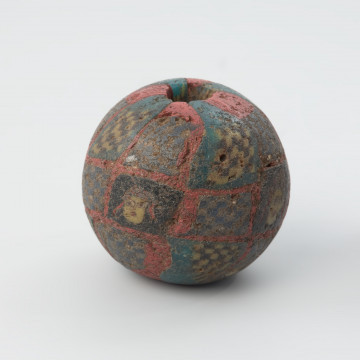
Decorated goblet
National Museum in Szczecin
Part of the collection: Antiquity
The vase with bulky proportions and the body decorated with irregular, oblique shallow lines all around represents one of the forms of pottery characteristic for the Dębczyn group, which inhabited Western Pomerania from the 3rd to the 6th centuries, during the Migration Period. In addition to various types of vases, the people from this culture used slimmer pots and bowls modelled on products from the Elbe region. Interestingly, some of the clay vessels they produced have their equivalents in Bohemia and Central Moravia. The presented vase was found in the filling of a domestic furnace discovered in the Lubieszewo settlement in Gryfice poviat. From the entire structure of the furnace, only one chamber, lined with closely fitting stones and traces of wooden posts supporting a roof, has remained. The archaeological research at the Lubieszewo settlement was carried out between 1963-1967 by Ryszard Wołągiewicz, an employee of the National Museum in Szczecin. Due to the scale of the research and the number of archaeological sources, the settlement is one of the most important sites for the study of the Migration Period in Western Pomerania. Besides numerous household objects such as stoves, hearths and cobblestones, traces of houses with post structures have been uncovered here. The walls of such buildings, woven from branches or laid from laths and covered with clay, were supported on poles stuck vertically in the ground.
Bartłomiej Rogalski
Author / creator
Dimensions
cały obiekt: height: 10.7 cm
Object type
furnishings and equipment; container; vessel (container)
Technique
manual modelling
Material
clay
Creation / finding place
Owner
Muzeum Narodowe w Szczecinie
Identification number
Location / status

National Museum in Szczecin

National Museum in Szczecin

National Museum in Szczecin
DISCOVER this TOPIC
Castle Museum in Łańcut
DISCOVER this PATH
Educational path